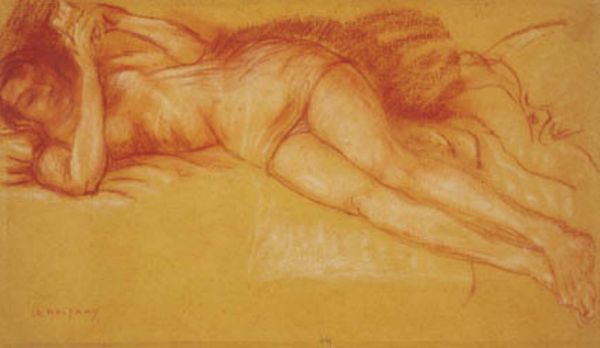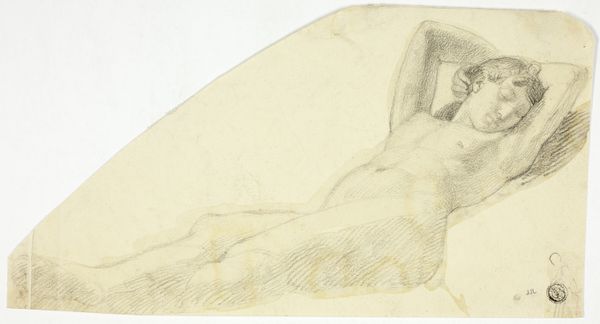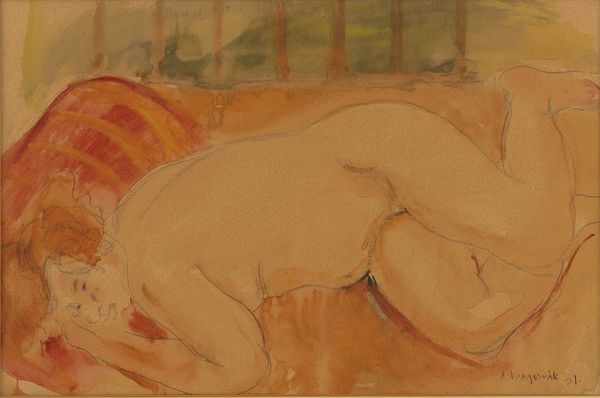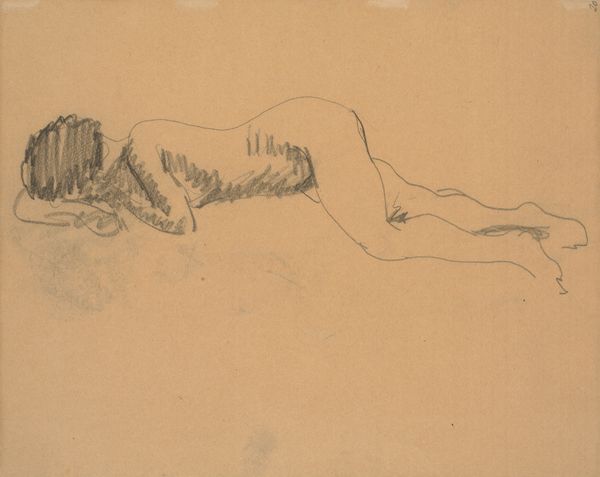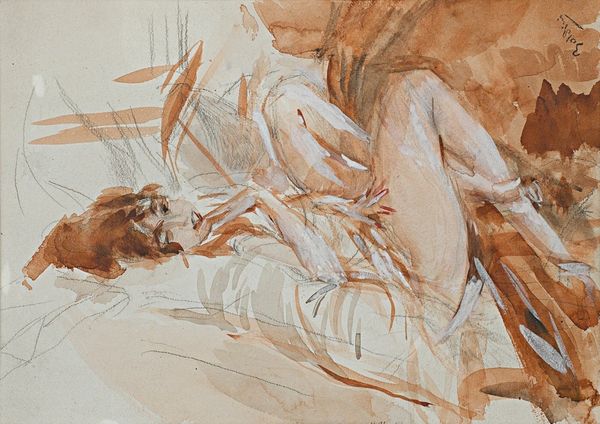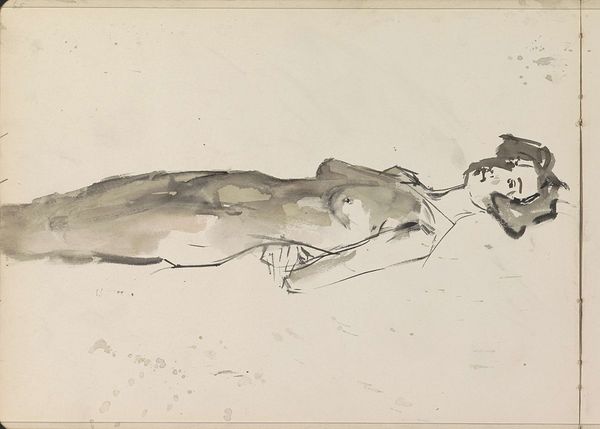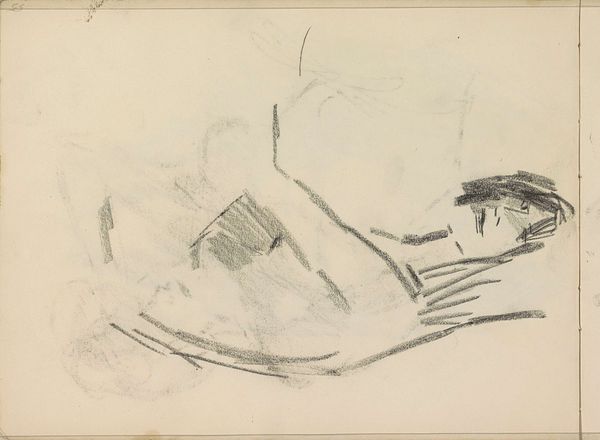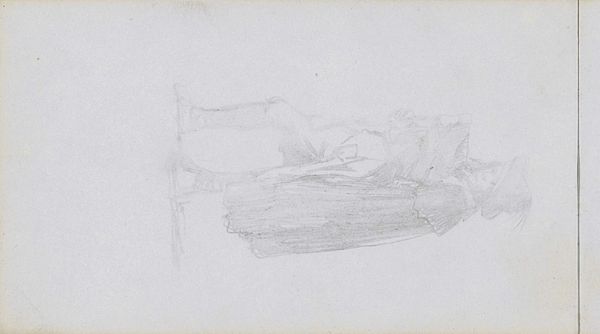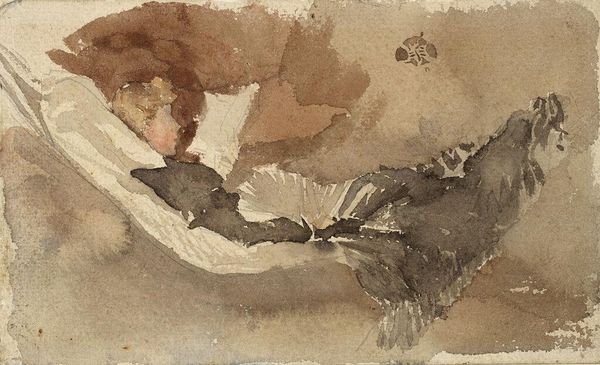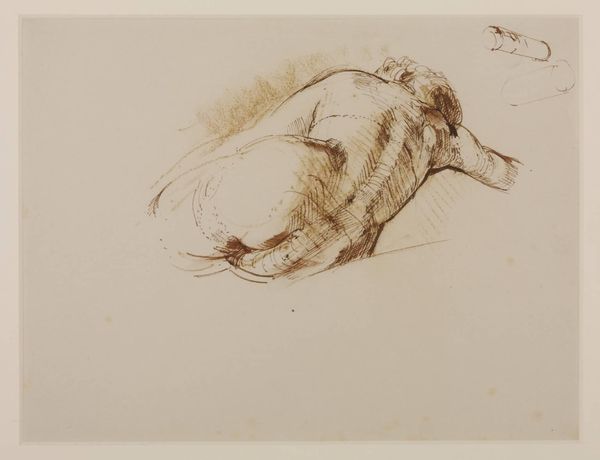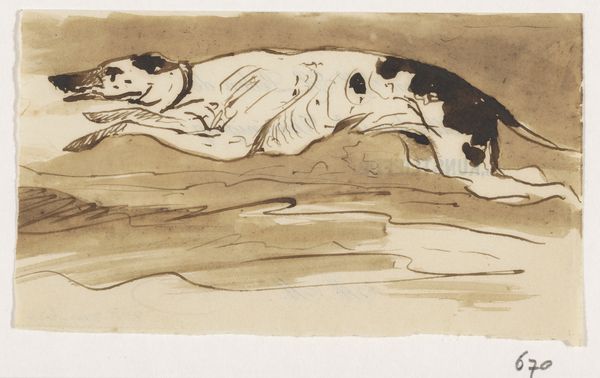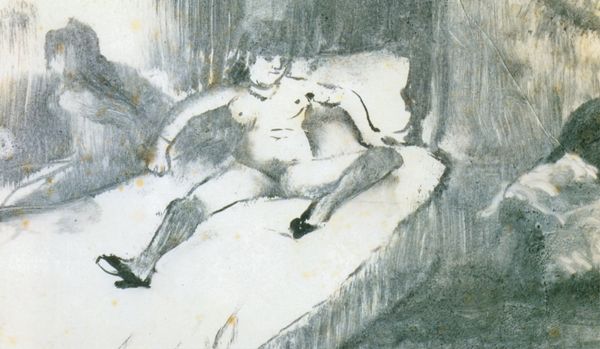
drawing, watercolor, pencil
#
portrait
#
drawing
#
oil painting
#
watercolor
#
romanticism
#
pencil
#
nude
#
watercolor
Copyright: Public domain
Editor: This is an untitled work, believed to be by Auguste Rodin, and it seems to be a watercolor and pencil drawing of a nude figure. It’s really quite delicate, almost ethereal. What strikes me is the unfinished quality of it, which somehow makes it feel very immediate. What do you see in this piece? Curator: I see a record of the artist's hand and a study in the materiality of art production. Consider Rodin’s labor. Each line, each wash of watercolor, is a physical act, a direct inscription of his body’s movement onto the paper. Look at the quick, almost frantic lines around the figure. What do they tell us about Rodin's process? Editor: They give it a sense of energy, like he was trying to capture a fleeting moment. Curator: Precisely. And beyond the purely aesthetic, we need to consider the social context. What was the status of the artist in Rodin’s time? Someone elevated, set apart. Rodin used inexpensive materials—paper, pencil, watercolor—traditionally associated with studies or preliminary sketches, challenging the hierarchy that prized oil painting above all else. Do you see how the ‘unfinished’ quality actually challenges the very definition of a finished work of art? Editor: Yes, it’s like he’s elevating the process itself, showing the labor involved. I never thought of it that way before. Curator: The act of creation becomes visible, disrupting notions of artistic genius as something divinely inspired. This isn’t about polished perfection; it's about the evidence of work, the mark of the maker, and it questions the traditional boundaries of what is deemed high art versus a preparatory sketch, or even craft. Editor: So, by focusing on the materials and process, we can see how Rodin’s work subtly challenges the established art world? Curator: Exactly. The ‘Untitled’ nature adds another layer – it removes pressure to ascribe conventional meaning, pointing viewers instead to the materials and their manipulation. Editor: That’s a fascinating perspective. I definitely see this piece differently now, thinking about it in terms of materials, process, and social context.
Comments
No comments
Be the first to comment and join the conversation on the ultimate creative platform.
